Related Research Articles
Institutional racism, also known as systemic racism, is defined as policies and practices that exist throughout a whole society or organization that result in and support a continued unfair advantage to some people and unfair or harmful treatment of others based on race or ethnic group. It manifests as discrimination in areas such as criminal justice, employment, housing, healthcare, education and political representation.

Edward Koiki Mabo was an Indigenous Australian man from the Torres Strait Islands known for his role in campaigning for Indigenous land rights in Australia, in particular the landmark decision of the High Court of Australia that recognised that indigenous rights to land had continued after the British Crown acquired sovereignty and that the international law doctrine of terra nullius was not applicable to Australian domestic law. High court judges considering the case Mabo v Queensland found in favour of Mabo, which led to the Native Title Act 1993 and established native title in Australia, officially recognising the rights of Aboriginal and Torres Strait Islander people in Australia.
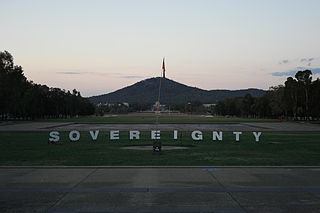
Australian Indigenous sovereignty, also recently termed Blak sovereignty, encompasses the various rights claimed by Aboriginal and Torres Strait Islander peoples within Australia. Such rights are said to derive from Indigenous peoples' occupation and ownership of Australia prior to colonisation and through their continuing spiritual connection to land. Indigenous sovereignty is not recognised in the Australian Constitution or under Australian law.
Andrew Bolt is an Australian conservative social and political commentator. He has worked at the News Corp-owned newspaper company The Herald and Weekly Times (HWT) for many years, for both The Herald and its successor, the Herald Sun. His current roles include blogger and columnist at the Herald Sun and host of television show The Bolt Report each weeknight. In Australia, Bolt is a controversial public figure, who has frequently been accused of abrasive demeanour, racist views and inappropriate remarks on various political and social issues.

The Racial Discrimination Act 1975(Cth) is an Act of the Australian Parliament, which was enacted on 11 June 1975 and passed by the Whitlam government. The Act makes racial discrimination in certain contexts unlawful in Australia, and also overrides state and territory legislation to the extent of any inconsistency.

Stan Grant is an Australian journalist, writer and radio and television presenter, since the 1990s. He has written and spoken on Indigenous issues and his Aboriginal identity. He is a Wiradjuri man.

Alas Poor Yagan is an editorial cartoon, drawn by Dean Alston and published in The West Australian newspaper on 6 September 1997. It consists of a panel of eight drawings of Noongar activist Ken Colbung speaking to a group of three Indigenous Australian children. The cartoon's content offended many Australians, and resulted in a complaint of racism to the Human Rights and Equal Opportunity Commission. The commission eventually ruled that the cartoon made inappropriate references to Noongar beliefs but did not breach the Racial Discrimination Act 1975. This ruling was subsequently upheld on appeal to the Federal Court of Australia.

Marcia Lynne Langton is an Aboriginal Australian writer and academic. As of 2022 she is the Redmond Barry Distinguished Professor at the Melbourne School of Population and Global Health, University of Melbourne. Langton is known for her activism in the Indigenous rights arena.
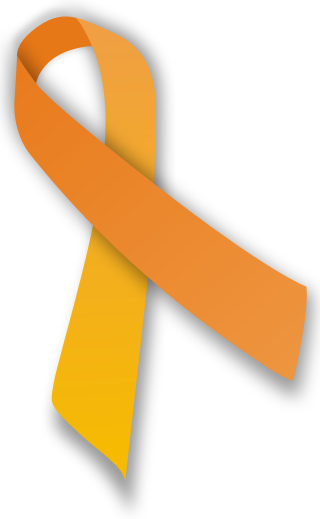
Harmony Day, an event officially expanded and renamed as Harmony Week for its 20th anniversary in 2019, is a government-declared observance celebrated annually on or around 21 March in Australia. It was introduced by the Howard government 1999, and coincides with the United Nations International Day for the Elimination of Racial Discrimination. The colour orange is associated with the day.
Indigenous Australian self-determination, also known as Aboriginal Australian self-determination, is the power relating to self-governance by Aboriginal and Torres Strait Islander peoples in Australia. It is the right of Aboriginal and Torres Strait Islander peoples to determine their own political status and pursue their own economic, social and cultural interests. Self-determination asserts that Aboriginal and Torres Strait Islander peoples should direct and implement Aboriginal and Torres Strait Islander policy formulation and provision of services. Self-determination encompasses both Aboriginal land rights and self-governance, and may also be supported by a treaty between a government and an Indigenous group in Australia.

Michael Alexander Mansell is a Tasmanian Aboriginal (Palawa) activist and lawyer who has campaigned for social, political and legal changes.
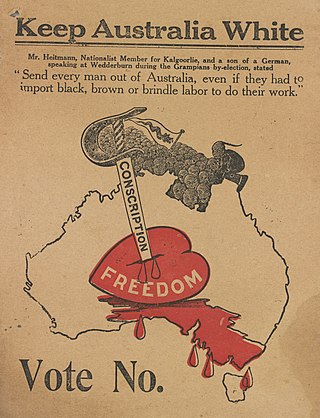
Racism in Australia comprises negative attitudes and views on race or ethnicity which are held by various people and groups in Australia, and have been reflected in discriminatory laws, practices and actions at various times in the history of Australia against racial or ethnic groups.

Since the beginning of the 21st century, the media of Australia, mostly in Melbourne, Sydney, and India publicised reports of crimes and robberies against Indians in Australia that were described as racially motivated.
Various examples of violence have been attributed to racial factors during the recorded history of Australia since white settlement, and a level of intertribal rivalry and violence among Indigenous Australians pre-dates the arrival of white settlers from the Kingdom of Great Britain in 1788.
Racism in Canada traces both historical and contemporary racist community attitudes, as well as governmental negligence and political non-compliance with United Nations human rights standards and incidents in Canada. Contemporary Canada is the product of indigenous First Nations combined with multiple waves of immigration, predominantly from Europe and in modern times, from Asia.
Islamophobia in Australia is highly speculative and affective distrust and hostility towards Muslims, Islam, and those perceived as following the religion. This social aversion and bias is often facilitated and perpetuated in the media through the stereotyping of Muslims as violent and uncivilised. Various Australian politicians and political commentators have capitalised on these negative stereotypes and this has contributed to the marginalisation, discrimination and exclusion of the Muslim community.
Section 18C of the Racial Discrimination Act 1975, deals with offensive behaviour "because of race, colour or national or ethnic origin" in Australia. It is a section of the Racial Discrimination Act 1975, which was passed by the Australian Parliament during the term of the Whitlam government and makes racial discrimination unlawful in Australia. Section 18C was added by the Keating government in 1995. The Section has been controversial and subject to much debate.

The Aboriginal and Torres Strait Islander Voice, also known as the Indigenous Voice to Parliament, the First Nations Voice or simply the Voice, was a proposed Australian federal advisory body to comprise Aboriginal and Torres Strait Islander people, to represent the views of Indigenous communities.
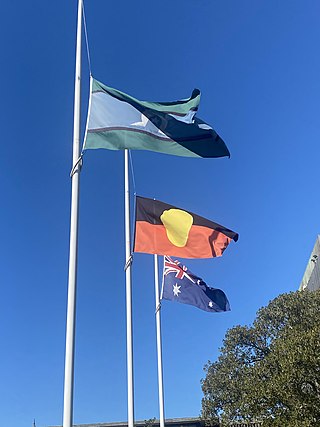
Reconciliation in Australia is a process which officially began in 1991, focused on the improvement of relations between the Aboriginal and Torres Strait Islander peoples of Australia and the rest of the population. The Council for Aboriginal Reconciliation (CAR), created by the government for a term of ten years, laid the foundations for the process, and created the peak body for implementation of reconciliation as a government policy, Reconciliation Australia, in 2001.
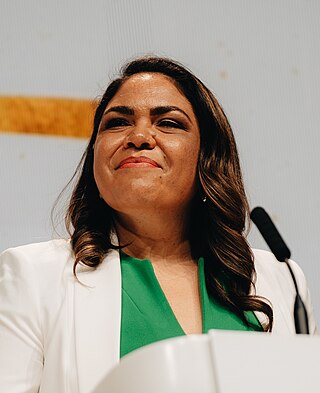
Jacinta Yangapi Nampijinpa Price is an Australian politician from the Northern Territory. She has been a senator for the Northern Territory since the 2022 federal election. She is a member of the Country Liberal Party, a politically conservative party operating in the Northern Territory affiliated with the national Coalition. She sits with the National Party in federal parliament. She has been the Shadow Minister for Indigenous Affairs since April 2023.
References
- 1 2 3 4 5 6 Dunbar, Jane (July–December 1994). "Newspaper Coverage of Mabo: An Evaluation of Performance". Australian Journalism Review. 16 (2): 116–124.
- 1 2 Bell, Philip (1992). Multicultural Australia in the Media. Canberra: Australia Government Publishing Service. pp. 78–79. ISBN 0-644-28632-6.
- ↑ Bullimore, Kim (January 1999). "Media Dreaming: Representation of Aboriginality in Modern Australian Media". Asia Pacific Media Educator. 6: 72–80. Archived from the original on 13 September 2007.
- 1 2 3 Ewart, Jacqui (July–December 1997). "The Scabsuckers: Regional Journalists' Representation of Indigenous Australians". Asia Pacific Media Educator. 3: 108–117.
- ↑ Moss, Irene (1991). "The Report of the National Inquiry into Racist Violence". Aboriginal Law Bulletin. 1991. AustLII. Retrieved 9 January 2008.
- ↑
- "Cultural Protocols for Indigenous Reporting in the Media" (pdf - 35 pages). ABC Message Stick. Australian Broadcasting Corporation . Retrieved 9 January 2008.
- ↑ "National Inquiry into Racist Violence: Summary" (pdf - 6 pages). Making Multicultural Australia. www.multiculturalaustralia.edu.au. 1991. Retrieved 9 January 2008.
- ↑ "Federation of Australian Radio Broadcasters:- Commercial Radio Codes of Practice and Guidelines" (pdf - 16 pages). Report by the Senate Select Committee on Information Technologies: In the Public Interest: Monitoring Australia's media (Appendix 8 of the Report published in 2000). Parliament of Australia: Senate. 1999. Retrieved 9 January 2008.
- ↑ "Bill Leak 'singled out' for 18C racial discrimination investigation". ABC News. 20 October 2016. Retrieved 29 November 2016.
- ↑ "Subscribe | theaustralian". www.theaustralian.com.au. Retrieved 29 November 2016.
- ↑ "Eric Abetz welcomes withdrawal of Bill Leak cartoon complaint". ABC News. 12 November 2016. Retrieved 29 November 2016.
- 1 2 3 Peters-Little, Frances (2003). "'Nobles and Savages' on the Television". Aboriginal History. 27: 16–38.
- 1 2 3 Goodall, Heather (May 1993). "Constructing a Riot: Television News and Aborigines". Media Information Australia. 68: 70–77. doi:10.1177/1329878X9306800112. S2CID 146263287.
- 1 2 3 Jakubowicz, Andrew (1994). Racism, Ethnicity, and the Media. St. Leonards: Allen and Unwin Pty. Ltd. pp. 38, 57–60. ISBN 1-86373-364-7.